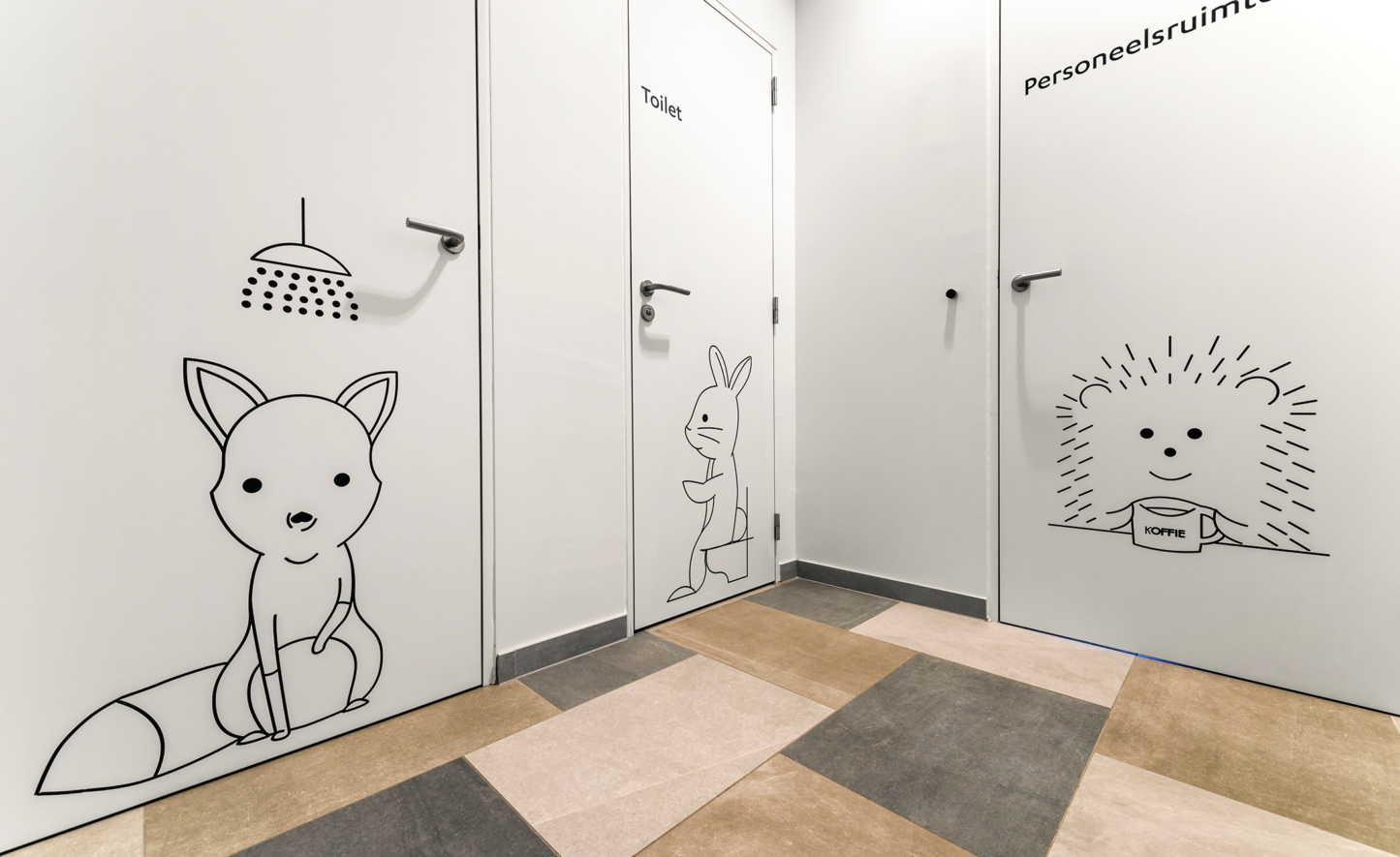total renovation of a monastic building as a creche with 54 spaces (18 spaces per living group)
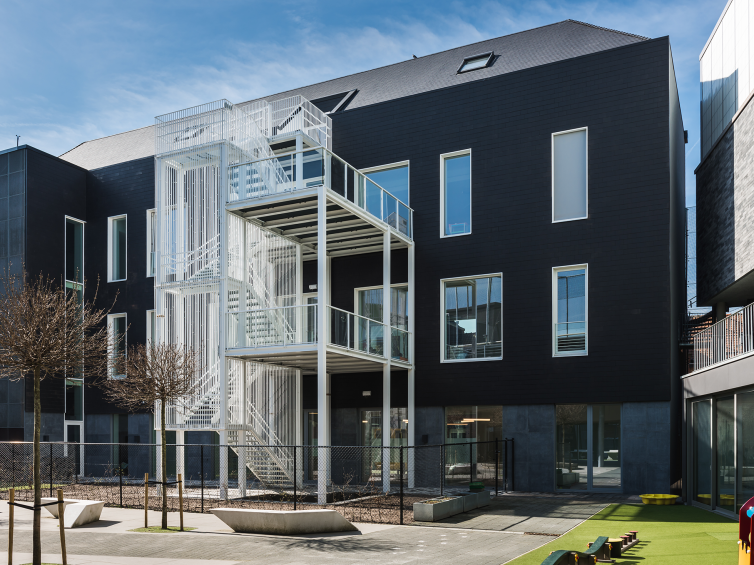
total renovation of a monastic building as a creche with 54 spaces (18 spaces per living group)

The project involves a total renovation of a former monastery into a new day care nursery centre, consisting of 3 communities with several general functions. The volume of the building remains unchanged and consists of three above-ground levels, with an attic. The envelope was fully insulated and finished with a ceramic tile façade and roof. The new windows maintain the rhythm of the existing majestic building, with some playfulness on the upper floors with the sporadic placement of half-width windows. The exterior joinery is framed in white, which contrasts sharply with the dark tiles of the façade.
The ground, first, and second floors are equipped with facilities for a total of 54 children. Particular attention has been paid to linking the levels: both physically, with stairs and a lift, and visually, by creating a void in the stairwell. The stairs are finished with white enamelled steel bars running from bottom to top, to emphasise the verticality.
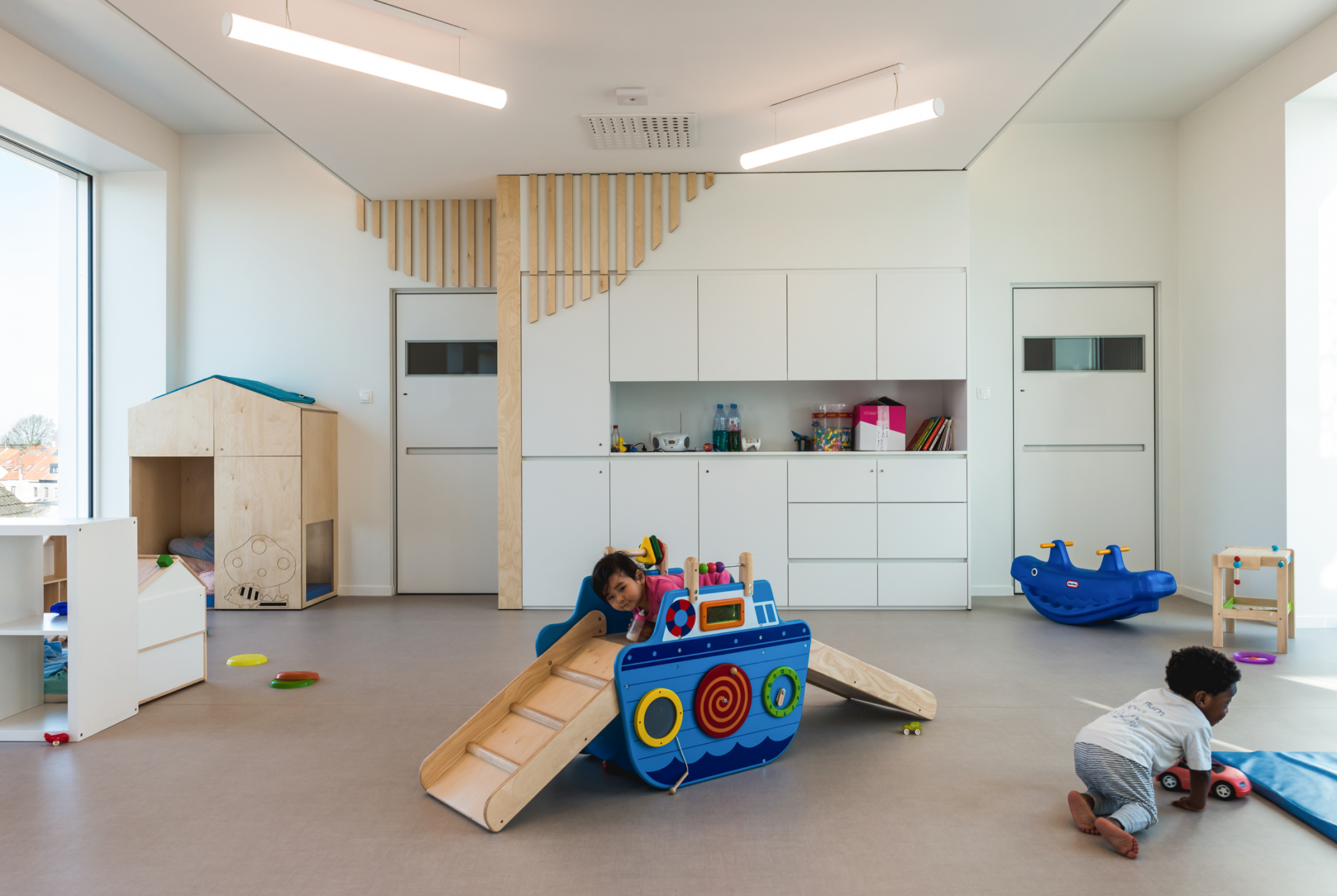
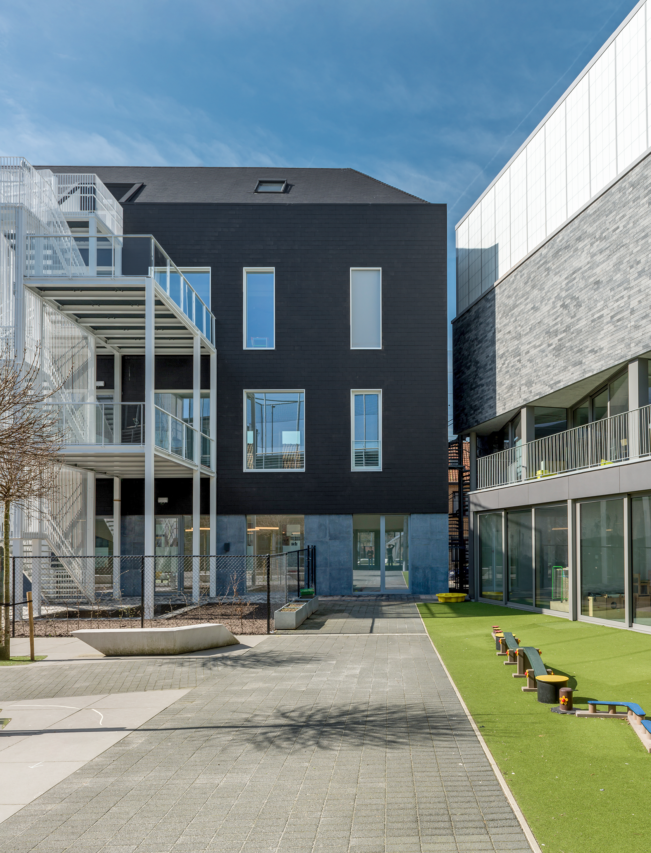
| program | total renovation of a monastic building as a creche with 54 spaces (18 spaces per living group) |
| client | Amate ASBL |
| address | Rerum Novarumlaan 1 • 2170 Merksem Belgium |
| building type | care • learn |
| status | completed |
| expertises | architectureinterior architecturebimproject managementhealth & safety coordinationprogramming |
| offices | antwerp |
| size | 1.325 m² |
| team | • client: Amate ASBL • structural engineering: Fraeye & Partners • technical engineering: Botec • contractor: Pit . Eiffage Benelux |
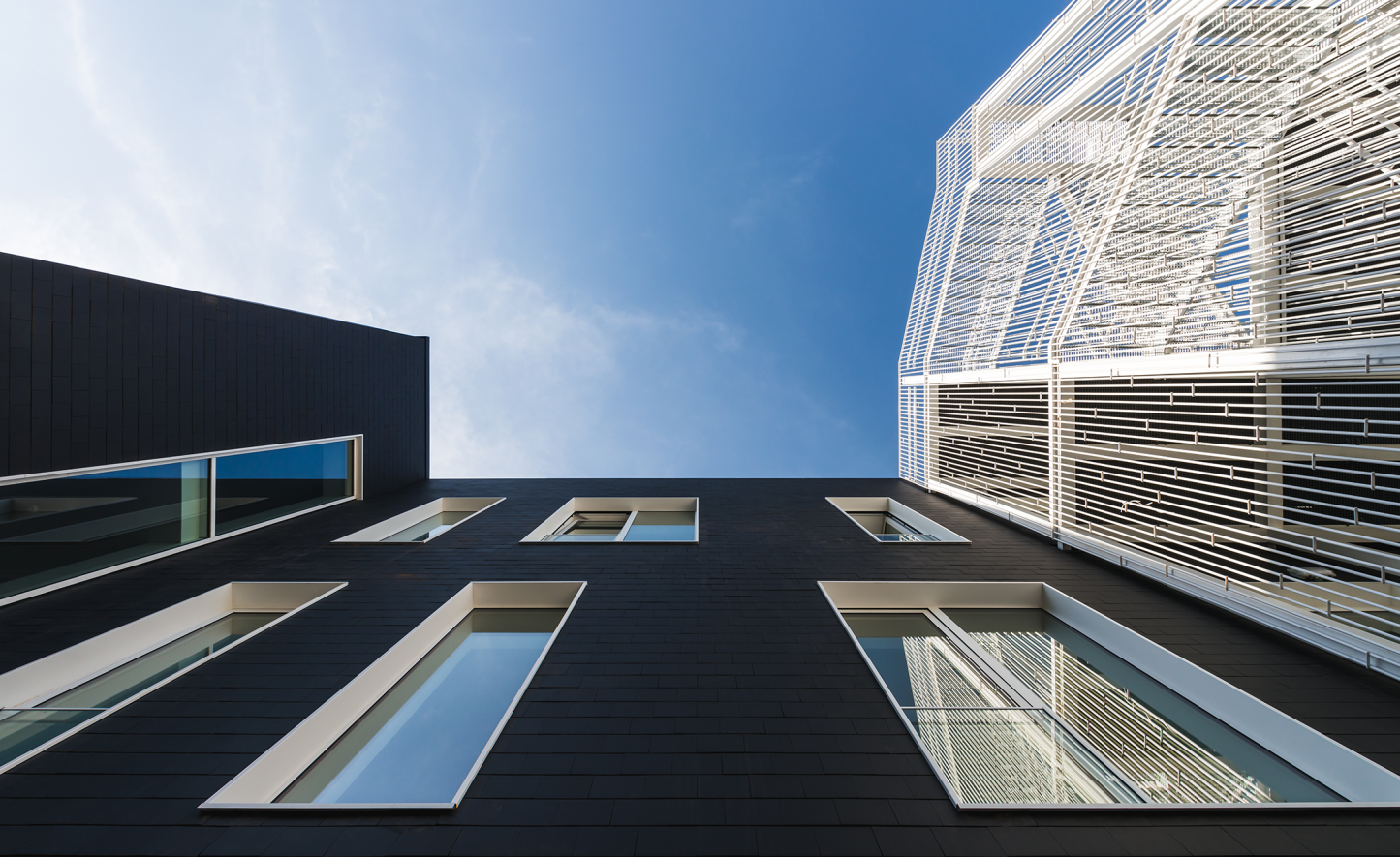
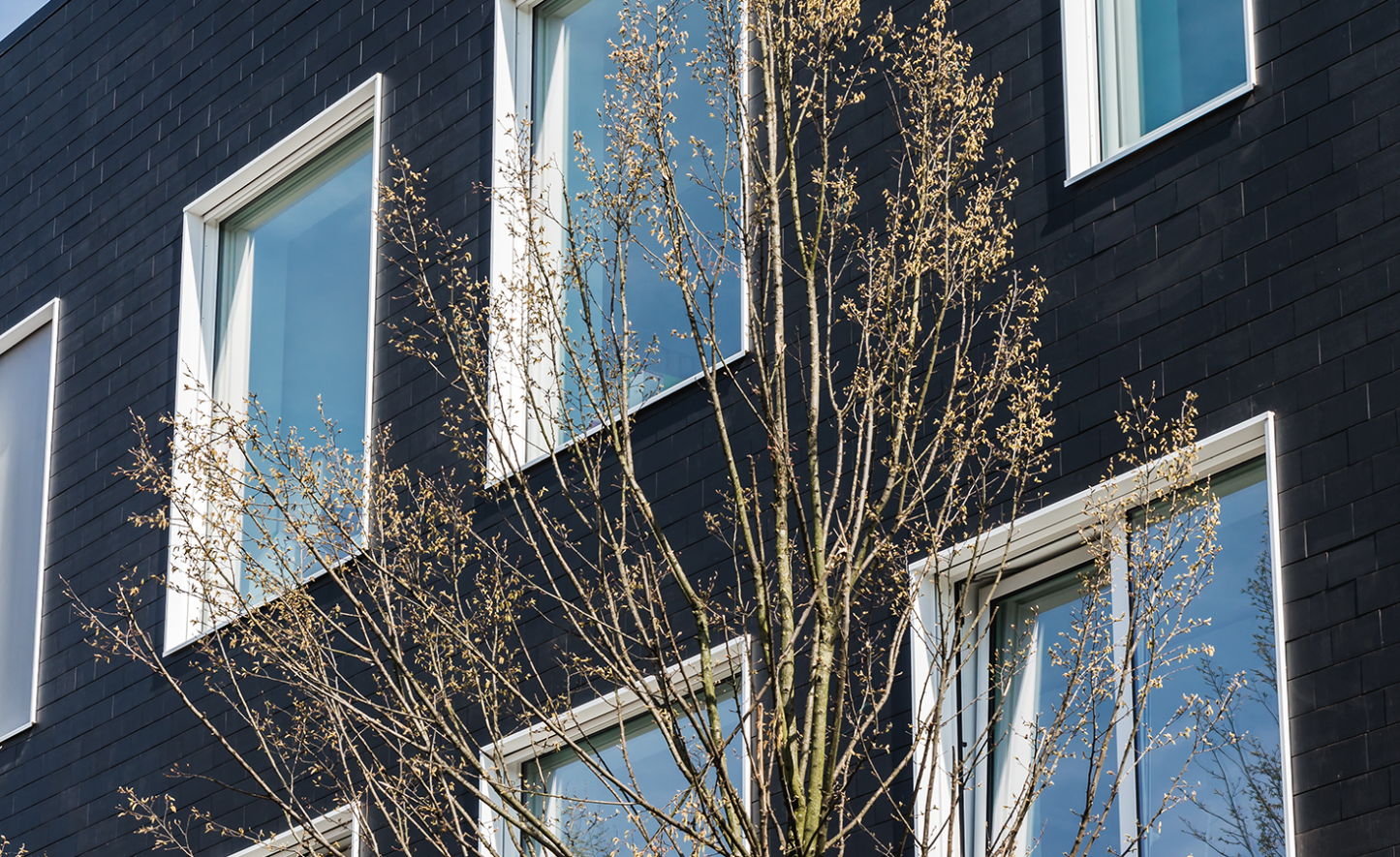
The living and care areas have large windows down to floor level. This enables sufficient natural light to enter and provides the children with a view of the outside world. Each community has an adjacent outdoor space, either in the form of a (partially covered) garden or a terrace. An external staircase, which also serves as an emergency staircase, also physically connects the various outdoor spaces with each other.
The shallow depth of the building and the large windows on the front and rear façades enable plenty of daylight to enter the building. In addition, the opening on the street side creates the necessary views and establishes contact between the street and the users.
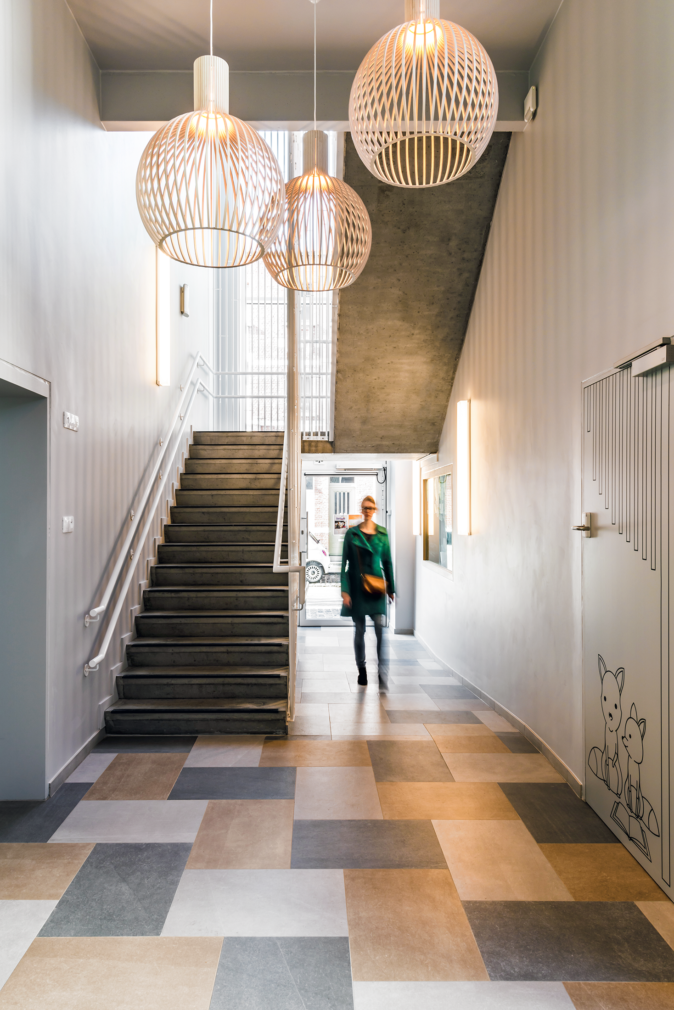
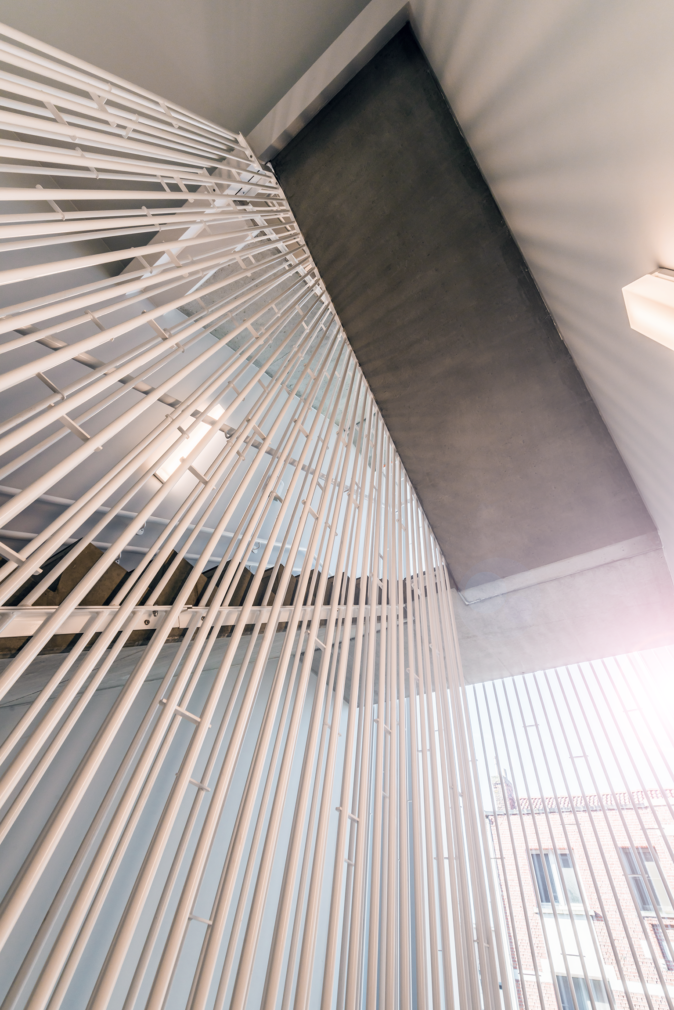
“Soft” finishing materials are used to give the building a warm and inviting character. Oak door sets, a clear PVC floor finish, and a tiled floor in a variety of warm grey tones are used to provide the required sense of warmth. The walls are also finished in a neutral light colour to give the children a sense of calm.
The “magic forest” theme is continued in the finish of the cupboards and signage. The integrated fixed child care furniture is placed in the care area and fulfils the required functionality of a day care nursery centre, but with a nod to the overall theme in the form of cottages and trees. The cupboards have been maintained in a neutral colour through the use of wooden plywood elements that convey a playful character. Playhouses with tactile elements and a maze are incorporated into the cabinets, where children can learn and discover.
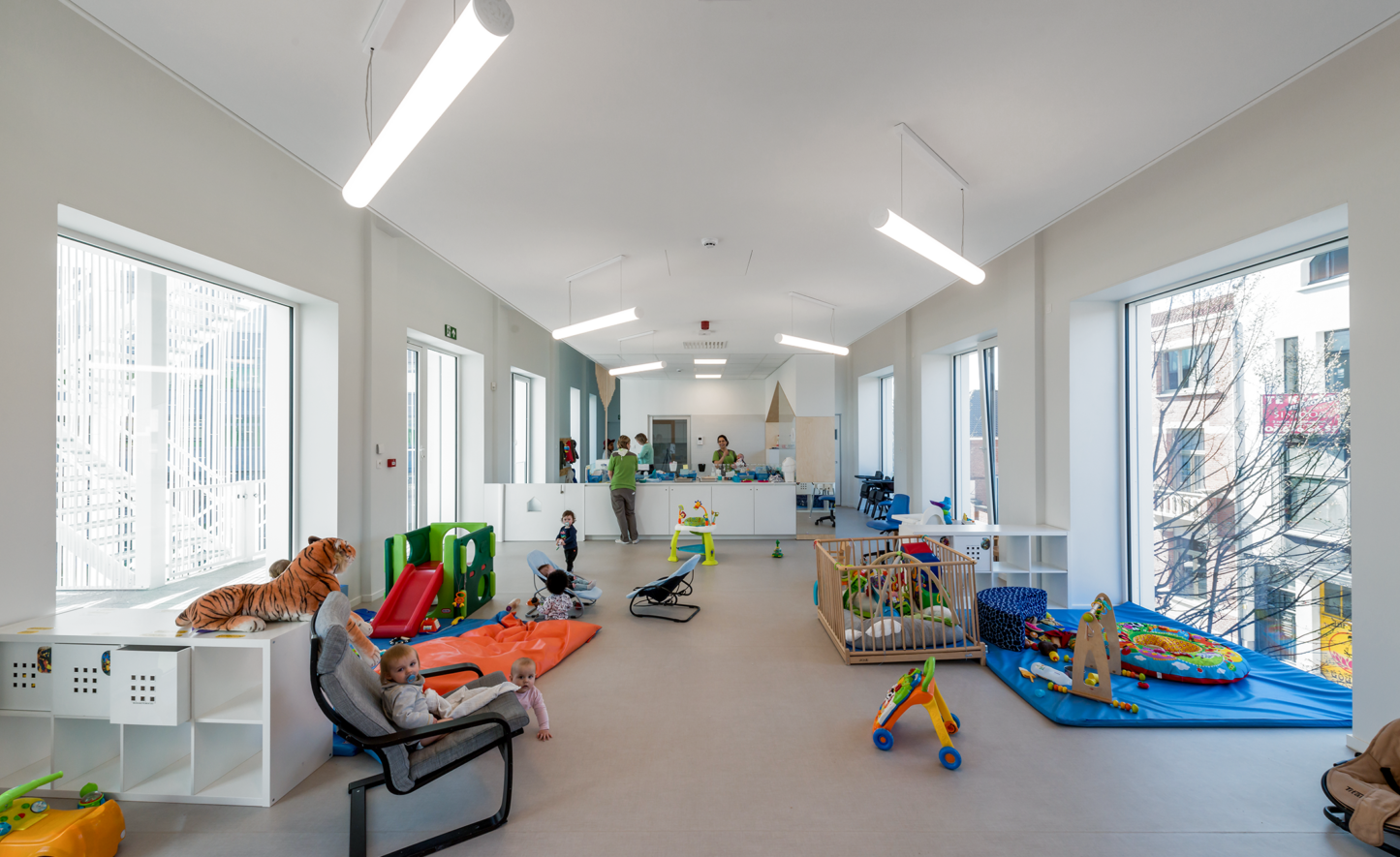
The theme is also reflected in the signage. Different animals have been used, each with its own activity: a fox having a shower, or a hedgehog carrying a laundry basket. In this way, parents and employees can quickly identify the area. The animals are also placed at children’s eye level to facilitate their use and identification. Functional requirements, experiential value, and the relationship between the interior and exterior and with the environment were important design criteria for the project.
